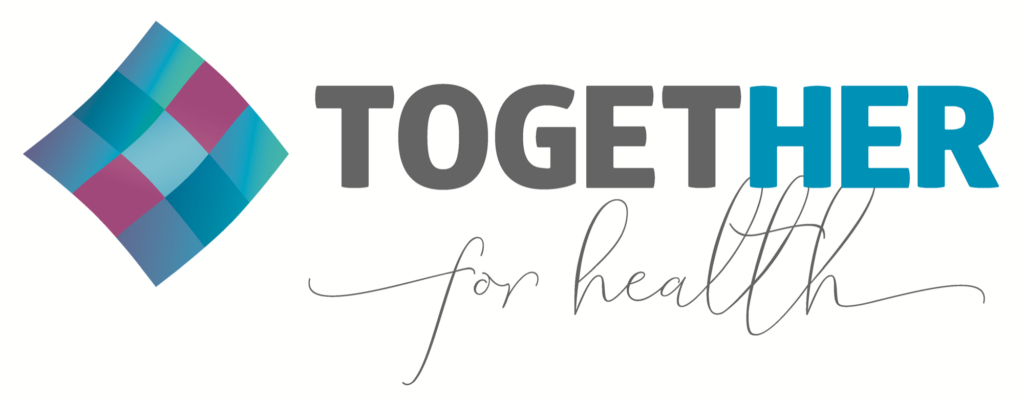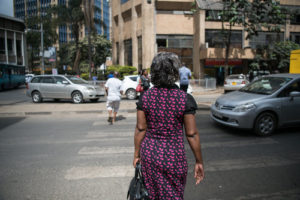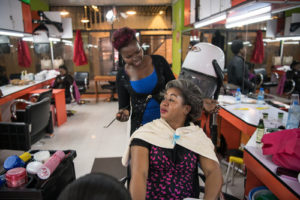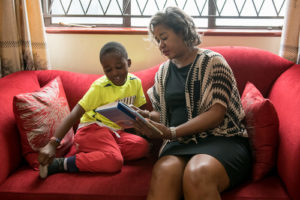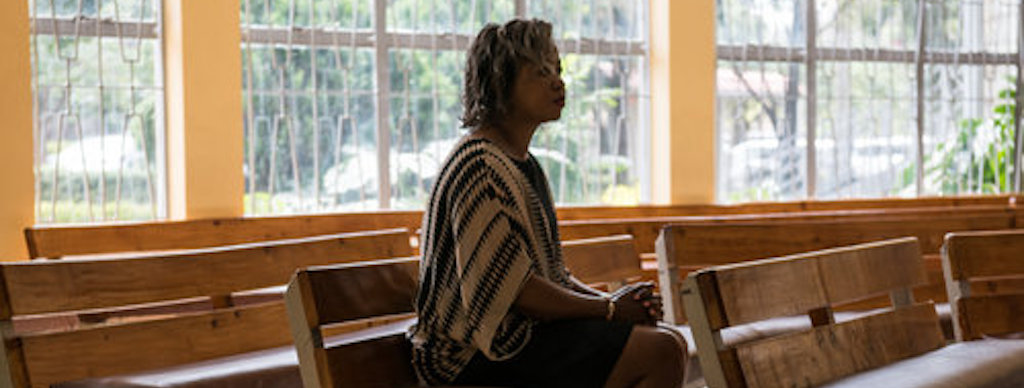Community Clinics Around the World are on the Front Lines of the Battle Against Cervical Cancer, and They Need Our Help
With increased funding for screen-and-treat programs, we can prevent needless deaths from cervical
cancer.
17 August 2018 – Fifty kilometers to the north of the Kenyan capital of Nairobi lies the sprawling farming community of Thika—home to large multinational coffee and pineapple plantations and the thousands of low-income workers who call it home.
In a dusty alley off the main road, Hannah Wambui runs the Gawa Medical Center, a small community clinic supported by the Kenyan Ministry of Health and Population Services Kenya. In addition to its tiny staff of six, the clinic houses two cramped examination rooms and a closet-sized dispensary. In rural areas around the world, clinics like Gawa are lifelines to their communities.
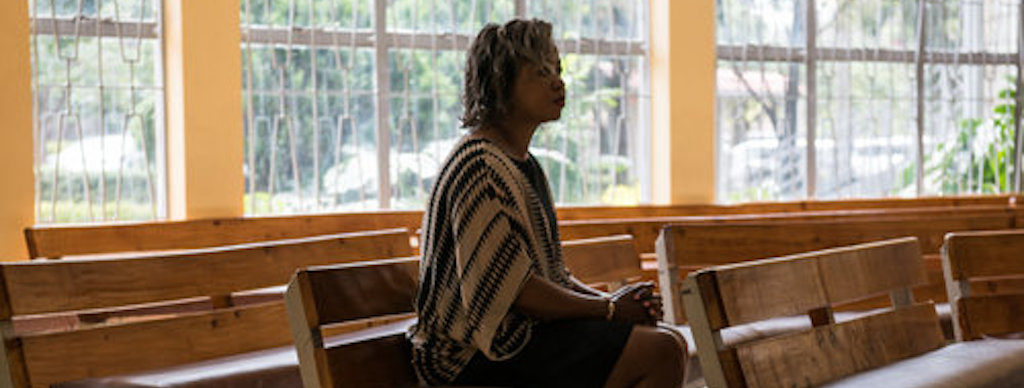
In a dusty alley off the main road, Hannah Wambui runs the Gawa Medical Center, a small community clinic supported by the Kenyan Ministry of Health and Population Services Kenya.
Gawa provides its clients with general women’s health services as well as cervical cancer screening and on-the-spot cryotherapy treatment for pre-cancerous lesions caused by the HPV virus. When Gawa hosts ‘Open Days’ providing free services, the clinic may see up to 100 patients in one day, and roughly five percent show early stages cervical cancer. Hannah and her team are battling an infection that she considers to already be at “crisis level”.
“I have worked here for several years, and I have seen [that] the leading cause of HPV is low income and the lack of information [about STDs and Cervical Cancer],” says Hannah. “The challenges I get in running this clinic, [are] because I’m surrounded by so many who are jobless. When they come to the clinic and need services they are unable to pay, but you can’t let them go.”
Cervical cancer, which develops from the HPV virus, is an entirely preventable disease, and yet kills more than 280,000 women worldwide every year. A disproportionate number of these fatalities are in developing countries where programs to detect and treat the early stages of the cancer—the precancerous lesions that can be safely removed—are either unavailable or too expensive.
Numerous studies have shown that access to screening by visual inspection using acetic acid (VIA)] of the cervix is a simple, affordable and sensitive test that can identify pre-cancerous lesions. When combined with rapid cryotherapy—together called ‘screen and treat’ programs—the risk of cancer can be greatly reduced. Though more accurate, cytology-based screening programs are used in the West, they require repeat testing and is financially out of reach for most women around the world.
In addition to these proven methods, new technology, such as mobile phone-enabled inspection units, are making treatment and diagnosis faster and more affordable.
Celina Schocken, Executive Director of TogetHER for Health, says that in developing countries such as Kenya, the challenges begin at ensuring girls are vaccinated for HPV and to screen and treat the women who are at risk of developing the disease. “We have the tools today to identify women at risk and to treat them immediately and affordably,” She says. “But so much more has to be done.”
- battle against cervical Cancer
- battle against cervical Cancer
- battle against cervical Cancer
Successful screen and treat programs rely heavily on mobilizing and educating communities, organizing services to meet women’s schedules and strengthening the systems that ensure clients return for follow-up appointments.
If it weren’t for the ‘Open Days’ at Gawa, many women would not make it to the clinic at all. Many of those who do are learning about cervical cancer, HPV vaccination and the need for regular check-ups for the first time.
Waiting outside the clinic is a cervical cancer survivor, Louise Nyambura. “Fear keeps many women away. Most women do not opt for screening because they fear they might have to undress, and it is hard for most women to get naked in front of a stranger; or that they have heard that it is a painful procedure and it is to be missed,” says Louise. “Most women I know have not been educated on the testing process and fear going through the screening process.”
At Gawa that day, there are many other women like Louise with little or no information on the infection and the risks.
When Elizabeth Wawera, 42, first visited the clinic she had never visited a gynecologist or had a PAP smear. Financial choices for her came down to either taking care of herself or looking after her family.
Another patient, Virginia Wambui, 37, was diagnosed with stage two cancer. She was not aware of the disease or the various ways she could have prevented it. Like many women, she only discovered it because abnormal bleeding. Because of the late detection she later had to undergo a longer period of radiotherapy and chemotherapy that was painful, costly and, as she has learned now, avoidable.
While a lack of resources holds-back communities like Thika from accessing health services, clinics like Gawa with their small staffs and dedicated volunteers, are left to mobilize and inform the community of cervical cancer and how to prevent it. This involves patrolling the market areas, talking to women about HPV and distributing posters that communicate the various stages of the cancer.
One such volunteer is Mary Mbugua, who has spent a life in service to others, working for little to no money; simply out of a sense of duty to do the right thing.
“I work to help the community because I live with them, I know them better and I know their problems. When I tell them about what we can do, they appreciate it, because they have known me for a long time. Even if there is a child who needs to go to hospital, I take care of them; I refer them to the hospital without asking for payments. Even for transport, I just pay for it myself.”
Screen and treat programs have been proven to work in developing countries. Government-run programs in Peru, Uganda, and Vietnam showed that using the visual inspection with acetic acid (VIA) and cryotherapy is a feasible approach to providing cervical cancer prevention services. Supporting these programs requires mobilizing and educating communities, organizing services to meet women’s schedules and needs, and strengthening systems to track clients for follow-up.
“With increased funding for screen and treat programs, we can prevent needless deaths from cervical cancer,” says TogetHER for Health Co-Founder, Kathy Vizas. “It is the mission of TogetHER to support these efforts globally.”
When women are properly informed about cervical cancer, and affordable or free services are made available, even one day can make a difference in a community like Thika. The collaboration of key partnerships to deliver funds towards effective screen and treat programs is part of the solution that will lead to the elimination of cervical cancer in future generations.
“I know the work we are doing here is making a positive outcome,” says Hannah. “When they come here and we check them and find they are sick, we can treat them. They tell the others to come to be checked and if they are sick they too are treated. We continue checking them and when they find that they are well they continue passing the message to other people to come to Gawa, so we are happy with the work.”
